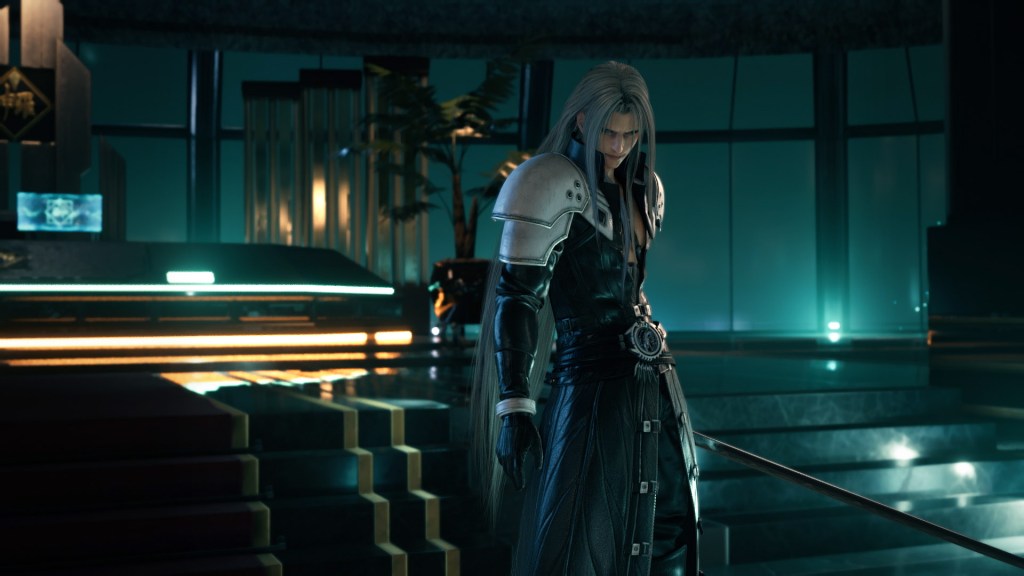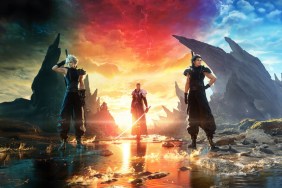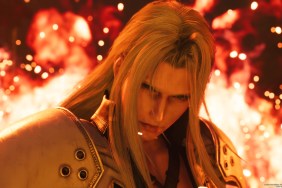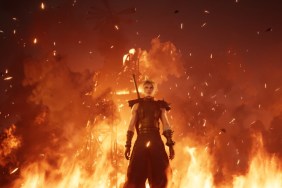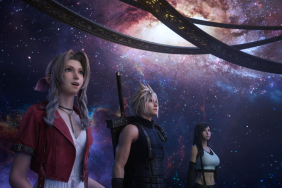SPOILER WARNING for the original Final Fantasy VII and Final Fantasy VII Remake. Do not read further if you don’t want any plot points spoiled.
I have to begin this with a caveat. Without the complete story of Final Fantasy VII Remake having concluded yet, it’s hard to judge where it’s going. It’s very obviously a different story from the original—at least in part—and we can expect it to make some as-yet-unexpected twists and turns. Also, this particular bit of criticism does nothing to diminish my love for this game, but it’s a noted difference from how the original laid out the plot and set up its villain(s).
Sure. Everyone knows that Sephiroth is the big bad silver-haired antagonist with a ridiculously long sword in Final Fantasy VII. So to see the iconic character show up in Final Fantasy VII Remake exceptionally early wasn’t any big surprise. Even though the game only covers the Midgar portion of the original—a section in which Sephiroth is never even seen—Remake went a bit out of its way to ensure it included him and set him up as the main force that Cloud and the party are up against. Ironically, despite stretching out the game’s
In the original Final Fantasy VII, the Midgar portion is all about Shinra and its questionable ethics as a company, killing the planet with its mako-sucking reactors, relegating lower-class citizens to the slums beneath enormous steel plates, and even going as far as to commit genocide on its own citizens (upper and lower class) just to strike a blow against those who oppose it.
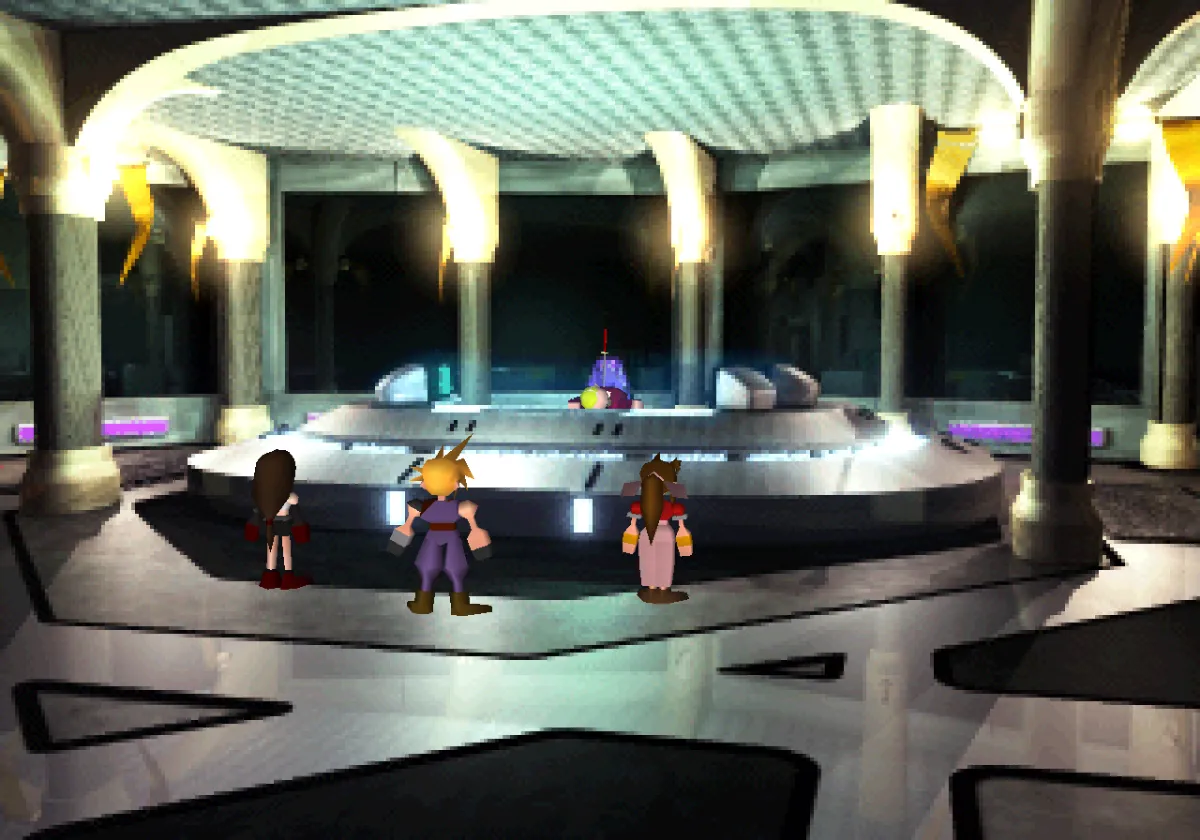
It’s not until we near the end of Midgar that we start getting whispers (lol, no pun intended) of a mysterious other threat. Something else is in the Shinra building with us. Blood trails and bodies litter the rooms and hallways. And when we finally reach the office of President Shinra? He’s already dead at his desk, a long sword impaled through him. It’s not an event we witness. It’s aftermath we stumble into after following a trail of horrors that led us here. There’s clearly a bigger threat than Shinra, but what is it? And if this threat is also out to kill those harming the planet, is it really so bad? We don’t get much time to muse on this. Rufus Shinra shows up to take his father’s place at the head of the company—an even more ruthless leader—and the party is forced to flee Midgar.
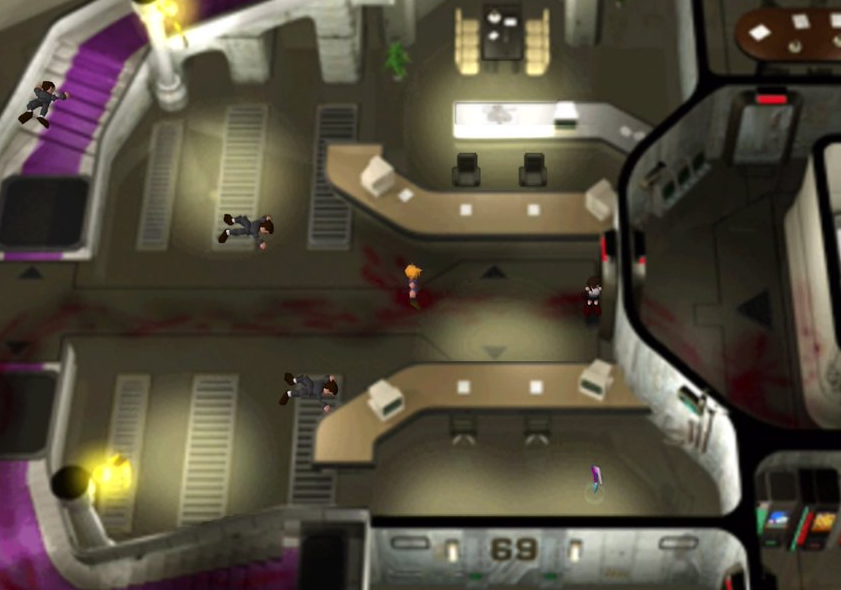
The larger mystery of who Aerith is, Jenova, Sephiroth, Cloud’s past, etc. don’t start getting really explored until much later in the game. So to cram all of that into Midgar? Well, it was certainly something to see. I, unfortunately, don’t have the benefit of coming at the Remake with fresh eyes not knowing how all the pieces fit together, so I was easily just able to nod along as these story elements came into play. But for brand new players? That’s a lot of information to throw at them all at once. Instead of layering the threats on top of one another in an escalating fashion, it just kind of tosses them all into the mixing bowl (with *that* added MacGuffin to top it off). Depending on where the story is headed, this may work out, but it critically changes the way the original set up its myriad villains and forces.
When Silver Hair Loses its Luster
In the original game, the party continues to chase down the mysterious “man in black,” the driving force that sends the party from Kalm (where we finally learn more about Cloud’s backstory and his connection to Sephiroth), to the Chocobo Ranch, through the caves to Junon and beyond. Sephiroth is a mysterious and unkown horror. He’s just a man right? Yet he slaughtered so many in the Shinra building. He murdered President Shinra. And then we come upon one of the most iconic moments of the 1997 game: the Midgar Zolom.
In order to make it across the swamplands near the Chocobo Ranch, we first need to get ourselves a Chocobo so that we avoid fighting the deadly and difficult Midgar Zolom, an enormous snake that will make quick work of your entire party. It’s nearly impossible to fight at this early stage of the game, and yet, when we reach the other side of the swamp, there’s one of the enormous beasts impaled on the jagged husk of a dead tree. Sephiroth is THAT powerful. It’s frightening, to say the least.
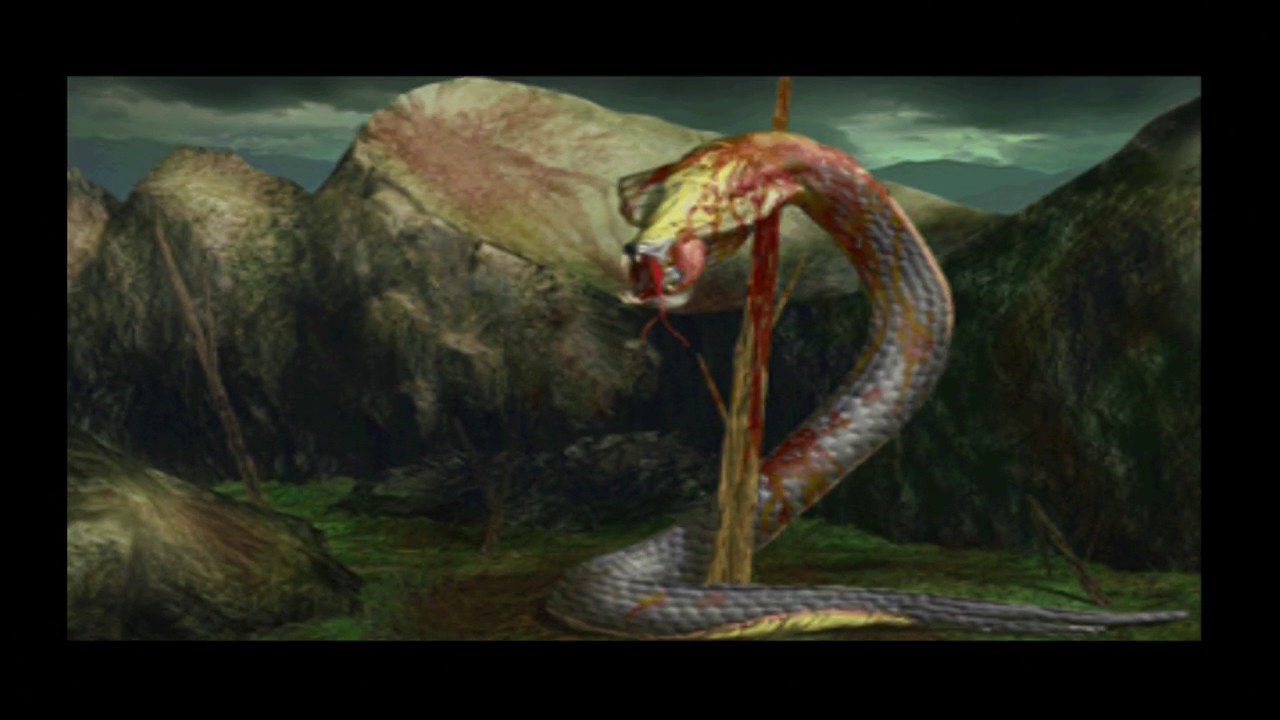
What we knew of Sephiroth before this point was that he was a SOLDIER, a legend, and, in many eyes, a hero. Cloud became a SOLDIER because he saw Sephiroth as an idol. So as the mystery descends and we begin to see that this supposed hero is now a ridiculously powerful murderer? It begins to present mixed emotions. He’s technically after the same goal we are. He was once a hero. But did he cross the line? Has he taken the cause of the planet too far? The unfolding mystery of Sephiroth presents unending nuance that is critical to the rest of the game and to the development of Cloud’s own character and story. Having him clash with Sephiroth this early kind of rushes the conflict between these characters as Cloud unravels his own psychosis following events in his past, events that he doesn’t altogether remember with much clarity at all.
It also allows Shinra to remain firmly woven into the conflict. Long before the threat becomes about the iconic meteor that makes up the game’s logo, the threat is Shinra and its unraveling web of power and control. Even with the mysterious and horrifying death of its president at the hands of Sephiroth, his son steps in to fill the void, peeling back another layer to reveal the insidiousness of the company and the people who make up its leadership.
The Inevitability of Rufus Shinra
In the original game (if only I had a dollar for every time I wrote that), the arrival of Rufus Shinra shows a terrifying new turn for the company. Just when Avalanche had thought Shinra beaten (even if not quite by their own hand), this new far more threatening individual swoops in and takes control. To be fair, the Remake has this moment, but it’s a relatively muted and confusing moment amidst everything else going on. You’ve got the Whispers, Red XIII, Sephiroth, Jenova, Hojo, the Turks, the Ancients, and a few more elements all vying for attention by the time you reach the top of the Shinra building. Where the original game more deftly weaves its various narrative elements, Remake kind of tosses them all at you at once, leaving the threads to be untangled later. It makes for a game that has multiple climaxes all happening simultaneously, which doesn’t really give any of them the opportunity to resonate.
For many players, Rufus Shinra, will simply be seen as this random villain who shows up with his dog and way too many belts. While they are trying to figure out Sephiroth and the Reunion (those mysterious robe-clad tattooed individuals), the Whispers that are literally playing with the life and death of beloved characters, and Hojo’s mysterious experiments, the implications of Rufus Shinra taking over his father’s company are kind of lost in the fray. In fact, Shinra itself really takes a huge backseat here, and given that the entire plot of Midgar centers around Shinra, it’s a big loss for the story to suddenly attention to something else.
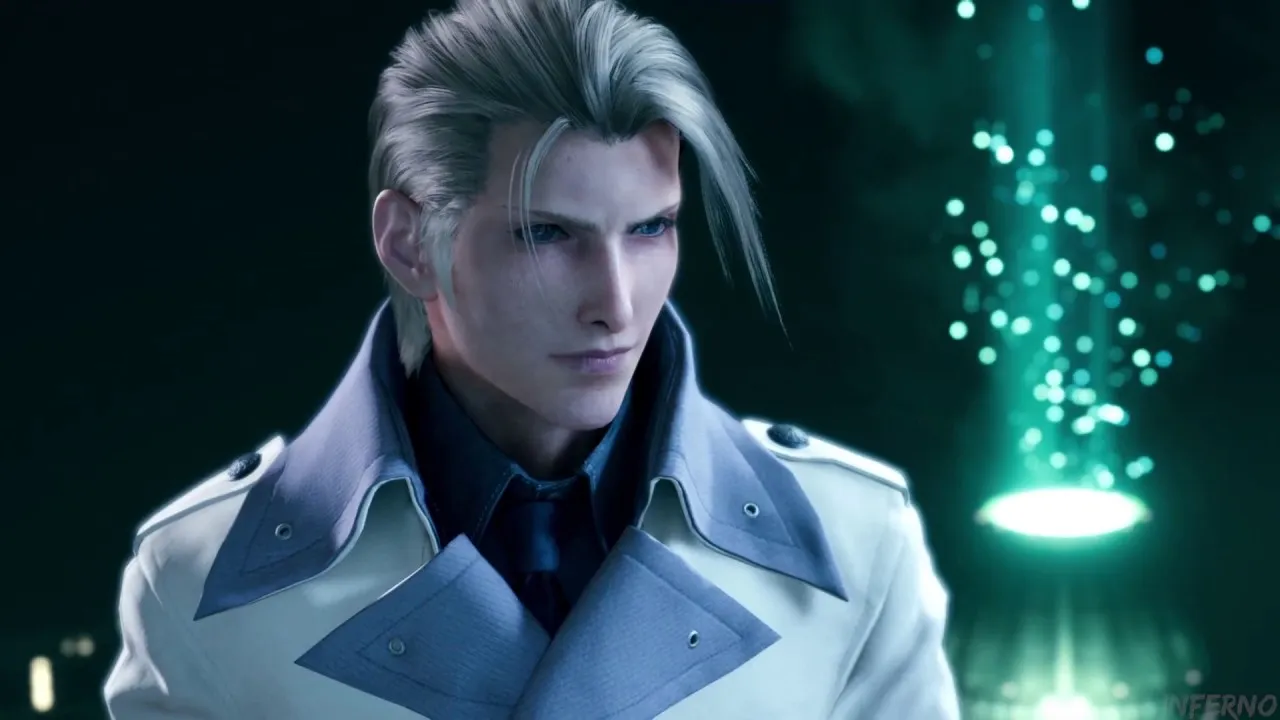
Now, Remake isn’t necessarily doing anything that the original didn’t eventually do. But it’s wielding some of these plot elements with all the grace of a hammer. It wants to put all the cards in play upfront, but it drastically changes the pacing of the original story, and thus changes the overall dynamics that some of these characters and moments once wielded.
Producer Yoshinori Kitase has addressed these points, saying that Sephiroth was introduced because he “is this massively overarching presence that looms over the whole Final Fantasy VII saga,” so they felt the need to explicitly introduce him in this game. But I feel that by directly showing him upfront (multiple times over), introducing him explicitly as the villain, and even having the player ultimately fight him at this stage of the story, it removes the invisible threat, power, and mystery that he once held. If they do indeed have the Midgar Zolom impaled in the next part, does it even matter? We’ve already seen this guy rip open a portal to another dimension so that we can fight the embodiment of fate itself. Suddenly spiking a giant snake on a tree doesn’t seem so terrifying anymore.
Of course, Square Enix has shown that perhaps it isn’t quite going for that one-to-one recreation of the original game. Remake wants to tell its own story, a story of 23 years passed, of a passionate and dedicated fanbase who will write thousands of words off of seemingly simple elements. Perhaps 23 years on, Sephiroth doesn’t need to retain the mystery he once held as a man who became like a god. Maybe Rufus Shinra gets the time in the spotlight that he deserves in future entries. It’s difficult to judge the complete story now without, well, the complete story. All we have to go on is “compared to the original,” which is perhaps exactly why things are so different this time around.
